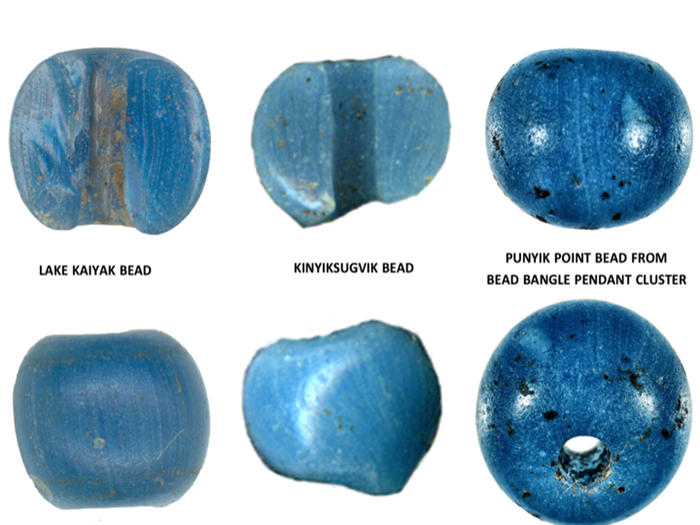A handful of Venetian glass beads found in three Eskimo sites in northern Alaska rewrite history: dated through the radiocarbon technique, they date back to a few decades before the voyage of Christopher Columbus. An itinerary over 16,000 kilometers long from the furnaces of the islands of the Lagoon to the ice of the Arctic, passing through the Silk Road and the Bering Strait: pearls, the result of a centuries-old tradition that entered the lists of the UNESCO, may be the oldest documented example of a European artifact that arrived in the New World by land. Turquoise colored, the size of a blueberry: at least ten pearls that have survived for centuries in the tundra of at least three sites in northern Alaska have been unearthed by archaeologists Mike Kunz and Robin Mills from the Bureau of Land Management who have unraveled the mystery in a article in "American Antiquity" magazine. The place of the discovery is located in an area crossed by ancient trade routes, frequented by generations of Inuit as a seasonal place for caribou hunting and for trout fishing. Archaeologists have been working on it for years and it is there that in the 1950s and 1960s William Irving of the University of Wisconsin discovered two turquoise pearls, each with a hole in the center. Kunz and Mills returned to the excavation site using funds intended to document sites that are in danger of disappearing due to erosion. The new research has unearthed other pearls near two copper circles (possibly a pair of earrings) and other metal fragments that could have been part of a necklace or bracelet. Intertwined with one of the earrings were plant fibers that have been dated with the radiocarbon technique: "We almost fainted when the results arrived: the plant was alive in the fifteenth century", more precisely, according to the time 'gap' of the analysis, between 1397 and 1488. With that result, endorsed by similar dating of objects found near the same type of pearls in two other sites in Alaska, archaeologists realized that they were faced with an epoch-making story: glass beads were found often in other archaeological sites in North America, but never west of the Rocky Mountains and never dated to the pre-colonial era: "Ours are undoubtedly the first European objects to arrive in the New World by land", say the two scholars. In their opinion, the pearls would have landed in Alaska between 1440 and 1480, years or decades before Columbus' voyage, after having traveled on a horse cart along the Silk Road to China and eastern Siberia: where a merchant will have them. 'probably loaded onto a kayak to land in Alaska after a 50-mile open sea journey through the Bering Strait. (HANDLE).
Venetian glass beads in Alaska before Columbus - Lifestyle
2021-02-11T16:16:56.038Z

A handful of Venetian glass beads found in three Eskimo sites in northern Alaska rewrite history: dated through the radiocarbon technique, they date back to a few decades before the voyage of Christopher Columbus. (HANDLE)
